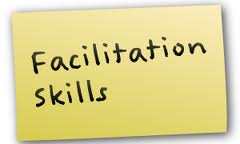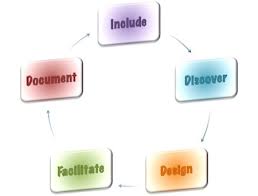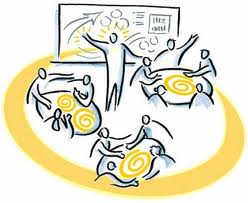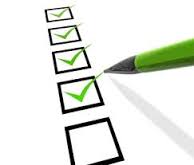What Is A GREAT Facilitator?
So you’ve been asked to facilitate a meeting. What does that mean exactly? Do you just ensure everyone’s introduced, and maybe kick off with a quick ice breaker exercise? Is your main role simply to stand by the flip chart and note down all the ideas? What preparation do you need to do? How do you manage the event, and how exactly do you pull the whole thing together?
In many types of group situations , and particularly in complex discussions or those where people have different views and interests, good facilitation can make the difference between success and failure.
, and particularly in complex discussions or those where people have different views and interests, good facilitation can make the difference between success and failure.
As a facilitator, you may need to call on a wide range of skills and tools, from problem solving and decision making, to team management and communications.
Here is a detailed look at what this role entails and how to be the best from Mind Tools.
What Is a Facilitator
The definition of facilitate is “to make easy” or “ease a process”. What a facilitator does is plan, guide and manage a group event to ensure that the group’s objectives are met effectively, with clear thinking, good participation and full buy-in from everyone who is involved.
To facilitate effectively, you must be objective. This doesn’t mean you have to come from outside the organization or team, though. It simply means that, for the purposes of this group process, you will take a neutral stance. You step back from the detailed content and from your own personal views, and focus purely on the group process. The secret of great facilitation is a group process that flows – and with it will flow the group’s ideas, solutions, and decisions too.
Your key responsibility as a facilitator is to create this group process and an environment in which it can flourish, and so help the group reach a successful decision, solution or conclusion.
What Does a Facilitator Do?
To facilitate an event well, you must first understand the group’s desired outcome, and the background and context of the meeting or event. The bulk of your responsibility is then to:
- Design and plan the group process, and select the tools that best help the group progress towards that outcome.
- Guide and control the group process to ensure that:
- There is effective participation;
- Participants achieve a mutual understanding;
- Their contributions are considered and included in the ideas, solutions or decisions that emerge;
- Participants take shared responsibility for the outcome.
- Ensure that outcomes, actions and questions are properly recorded and actioned, and appropriately dealt with afterwards.
There are as many ways to design a group process as there are events to facilitate. Group process design is also a huge topic in its own right, and something that professional facilitators learn through experience and training.

Here are some of the factors and options to consider:
- Do you want an open discussion, or a structured process?
An open discussion, well facilitated, may be the simplest option for your group process. But ask yourself whether you will be able to achieve the participation you need, and manage the discussion with the number of participants involved with this format. Can you cover the variety of topics needed? Can you generate enough ideas and solutions? And can you involve everyone, and get their buy-in? - What structured process should you choose?
If you need to accommodate participation from a large group, consider smaller “break-out” groups. Are you concerned about getting enough participation? Then give people time in the agenda to think about and write down the things they want to contribute. If you want to get ideas flowing, then consider including a brainstorming session. - Other factors to consider
You won’t be able to change some constraints. However, you may be able to change others to optimize your process and agenda. As part of this, consider:- The number of participants;
- The nature of the topics under discussion;
- The type of involvement people need to have;
- The background and positions of the participants;
- How well they know the subject and each other; and
- The time you have available.
Remember, whatever group process you define, it’s a question of keeping your focus on outcomes. Find the best way to achieve the objectives of the overall event.
Designing a realistic agenda
Designing the agenda goes hand in hand with designing the group process. Among the factors to consider when planning the agenda are:
- In what order should the topics be presented?

- How will participants get to know each other?
- How will they gain a common understanding of the objectives?
- If an event is to be broken into separate sessions, how much time should be allocated to each item?
- Will all participants be involved each session?
- Or will some be in smaller, break-out groups?
- How and when will break-out groups report back to the wider group?
- When will you recap and summarize?
- How will the outcomes of one session flow into the next?
- How will you achieve closure of the overall event?
By the end of the design and planning stage, you should have a solid agenda, which focuses on outcomes, and provides a good flow and structure for the event.
To guide and control the meeting, you will need to:
- Set the ground rules – What rules should participants follow in the meeting? How will people interact? How will you ensure that people respect each others ideas? How will questions be handled?
- Set the scene – Here, you’ll run through the objectives and agenda. Make sure everyone understands their role, and what the group is seeking to achieve.
- Get things flowing – You’ll make sure everyone introduces themselves, or perhaps use appropriate icebreakers to get the meeting off to a positive start.
- Keep up the momentum and energy – You might need to intervene as the proceedings and energy levels proceed. Make sure people remain focused and interested.
- Listen, engage and include – Even though, as facilitator, you’re taking a neutral stance, you need to stay alert, listen actively, and remain interested and engaged. This sets a good example for other participants, and also means you are always ready to intervene in facilitative ways. Is everyone engaged? If not, how can you bring them in? How can you get better participation?
- Monitor checkpoints, and summarize – Keep in control of the agenda, tell people what they’ve achieved and what’s next; Summarize often.
- Intervene only if absolutely required.

To keep the event flowing and positive:
- Watch for and close any side conversations. These limit the ability of others to focus, and often people are exchanging ideas that should be brought to the group.
- Keep a close eye on the timing. Be flexible, and balance the need for participation with the need to keep things running efficiently.
- Learn what to do when a discussion isn’t reaching a natural conclusion. Is more information needed? When and how will the discussion proceed? Park topics that cannot be concluded, and ensure that action time is scheduled to address these issues.
- Be on the lookout for people who aren’t participating fully. Are they experiencing discomfort? What is the source of the discomfort? What can you do to bring them into the conversation?
- Pay attention to group behavior, both verbal and non-verbal. Some of the most damaging behavior is silent, so know how to spot it and stop it effectively.
- Step in and mediate immediately if there are obvious personal attacks. Effective facilitators look for the least intrusive intervention first, so reminding everyone of the ground rules is often a good place to start. Whatever the issue, you can’t allow bad behavior to continue.
Record and Action
Last but not least among the responsibilities of a facilitator is the recording of outputs, and of bringing these together, sharing them, and making sure they are actioned. The key to successful recording of outputs from an event is to be clear about what will be recorded, how and by whom. Make sure people’s responsibilities are 100% clear, whether they are yours or others’ involved.
When you are recording and actioning, here are some things to remember:
- You are responsible for making sure the participants hear, see, and understand the information that is presented and offered. Make sure you keep an accurate record of what’s going on.
- Try to use words that the group chooses, and when in doubt, ask them to provide the words for you to record.
- Ensure all decisions and actions are recorded. You may want to use a scribe to do this, so that you can stay focused on the group and the process.
- As you record decisions and actions, check with the group that the information you’re recording is a fair and accurate reflection of what’s been discussed.
- Remind the group what has been discussed, and keep them focused and moving forward.
- If in doubt, ask for clarification before the discussion moves on.
- Make sure that responsibility for, and commitment to, action, is obtained and recorded when necessary.
- After the event, follow up to ensure that outstanding actions and issues are progressed, and that the proceedings are brought to a successful conclusion.
Key Points:
To be an effective facilitator you must know when to take a leadership role, and when to be neutral and take a back seat. The key to being proficient in the role is to plan and guide the proceedings effectively, and remain focused on the group process and outcomes, rather than specific content and opinions involved. When facilitating, take time to think about the process and agenda, and learn the skills you need to take the event through to a successful conclusion.
